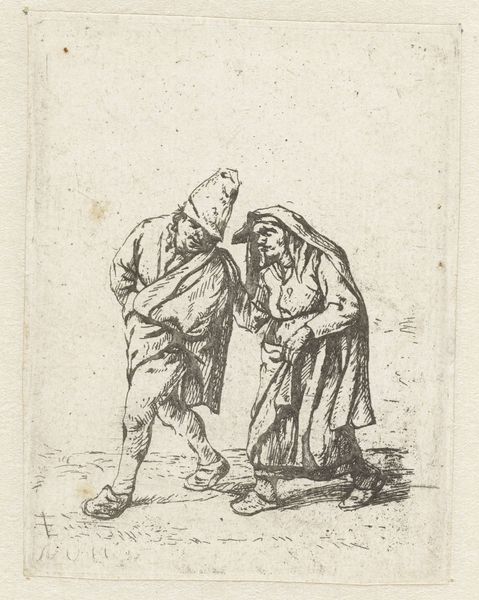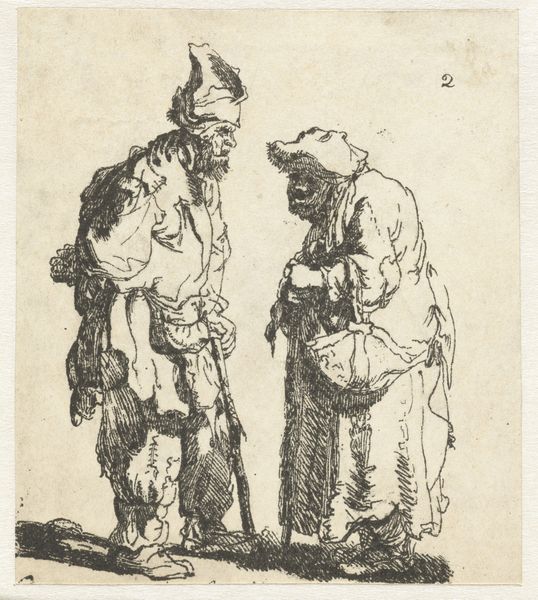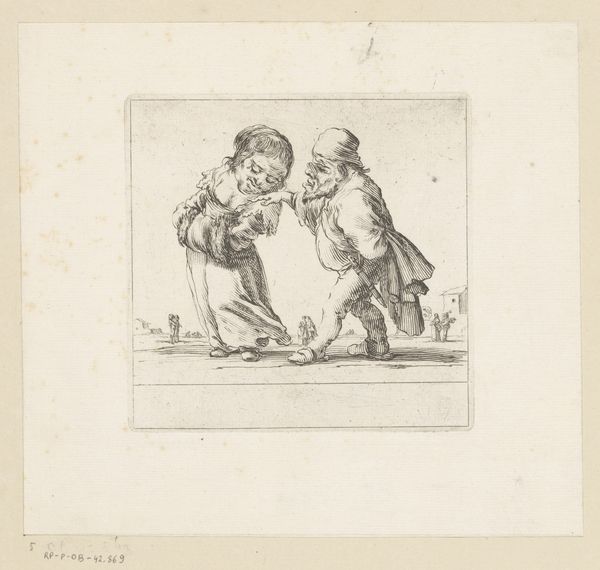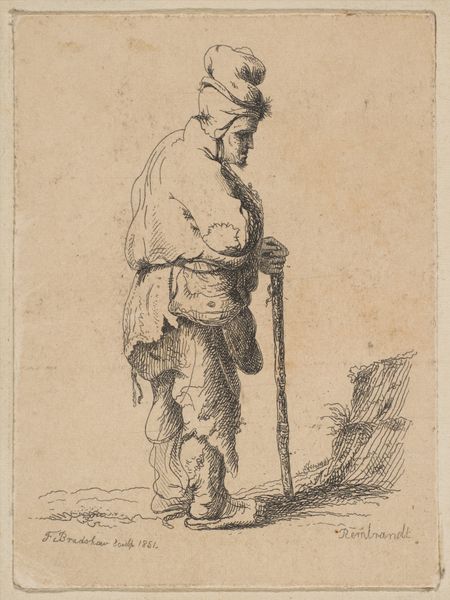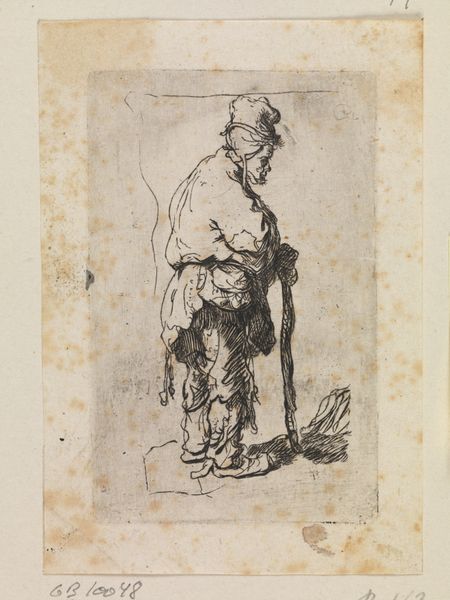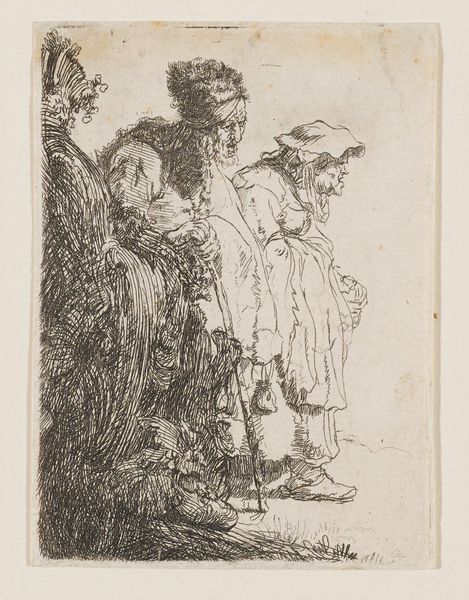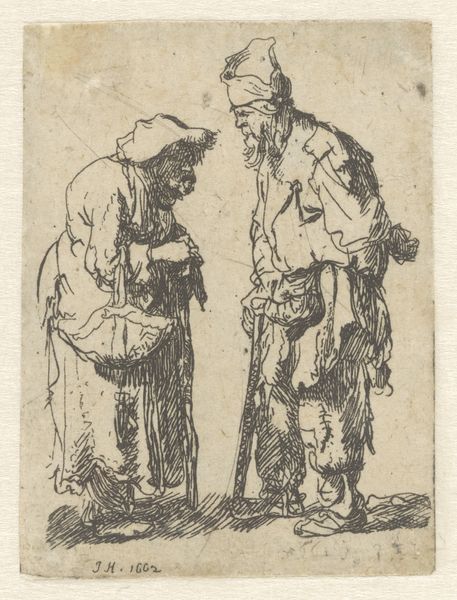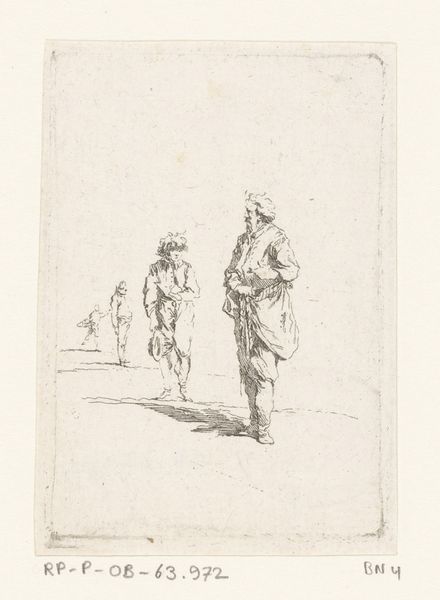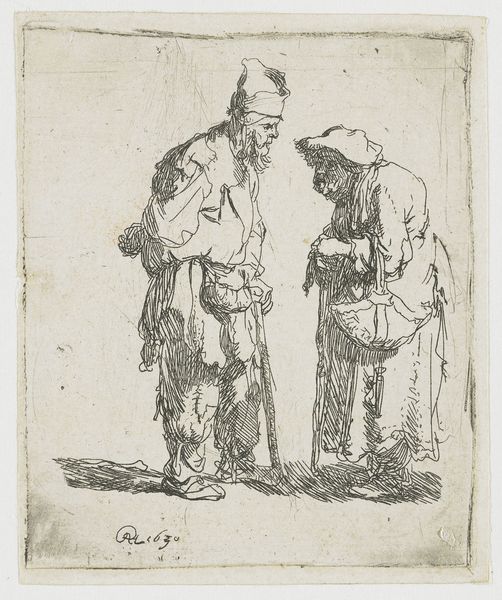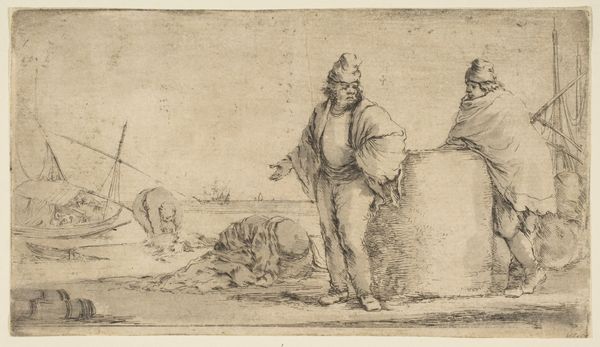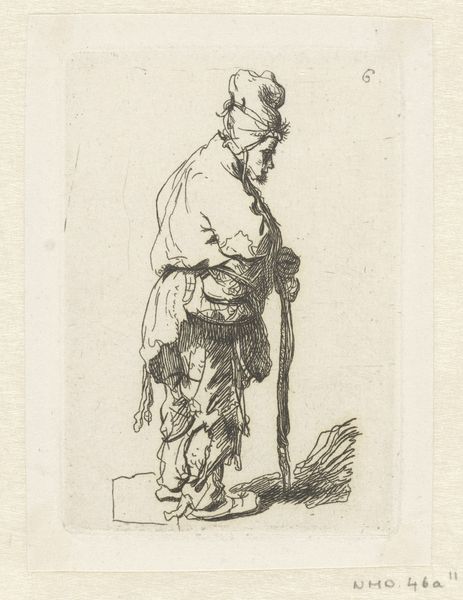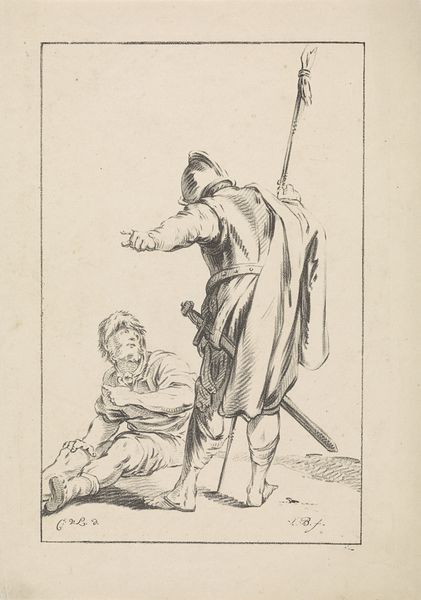
drawing, print, etching, paper, ink
#
drawing
#
baroque
# print
#
etching
#
paper
#
ink
#
genre-painting
Dimensions: 63 × 48 mm (plate); 75 × 60 mm (sheet)
Copyright: Public Domain
Curator: I’m immediately struck by the vulnerability in Rembrandt van Rijn's “Two Tramps, a Man and a Woman," circa 1634. There's a profound sense of weary itinerancy. Editor: Indeed. This etching provides an interesting glimpse into 17th-century Dutch society. Genre paintings like this often reflected—and sometimes challenged—social norms. It’s currently housed here at the Art Institute of Chicago. Curator: The stooped posture of the figures, the worn clothing—it all speaks volumes about their hardship. Is it possible that the walking stick may stand for vulnerability and even possible destitution? Editor: Absolutely, those visual elements carry significant cultural weight. In the iconography of the era, tramps or beggars were often used as reminders of fortune's fickleness, symbols of societal precarity, but let's not forget that these images helped reinforce certain social hierarchies. Curator: Yes, while seeming to depict common folk with empathy, this type of image certainly served as a cautionary moralizing reminder to wealthy art consumers. The placement within society becomes even more relevant than artistic portrayal when considering who may have been commissioning the piece, as a reminder of what one is, rather than isn't. Editor: Right. And the stark, almost desolate background further enhances this feeling. Notice how the sparse lines of the landscape emphasize their isolation and, perhaps, spiritual journey. Curator: Rembrandt’s mastery with etching allows for incredibly detailed linework, which emphasizes the ruggedness of their features and clothing. It gives their lives a raw honesty. Editor: Rembrandt clearly was trying to elicit not only the likeness of his subjects, but he may have also been aiming to show something else that might connect the image with potential buyers: compassion and recognition. What this means to each potential buyer may have been an interesting experience! Curator: Thinking about Rembrandt’s positionality as a prominent artist… what could have motivated this image for its social environment? Editor: Ultimately, reflecting on the enduring power of symbols makes it clear that there’s a universality to these depictions of wandering souls. I guess it helps keep cultural memory active for audiences today.
Comments
rijksmuseum about 2 years ago
⋮
Rembrandt’s rapid progress as a printmaker is easy to see in this group of poor wretches. The seated woman is still somewhat crudely executed, but the beggar woman with a gourd and her male companion already testify to greater mastery of the technique. The little prints of a man and a woman are etched in the finer style that Rembrandt was to develop later.
Join the conversation
Join millions of artists and users on Artera today and experience the ultimate creative platform.
